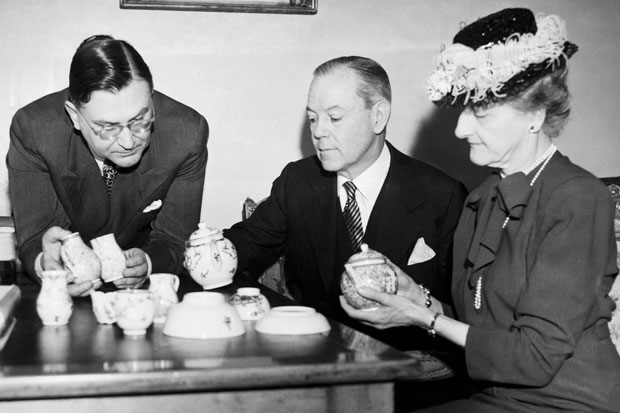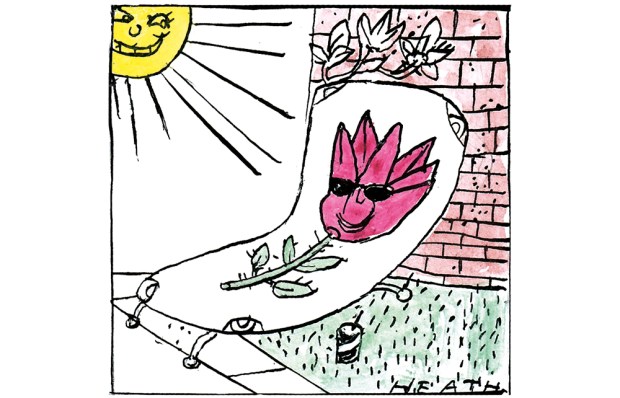Next time you’re in a shop that sells Chinese blue and white porcelain, pick up a piece and turn it over. Chances are good it will carry an inscription in blue on the bottom. Called a reign mark, it tells you which emperor ruled when the piece was made. As the last reign ended in 1912, the dish you’ve picked up should logically be at least a century old. Hundred-year-old porcelain selling for £2? Not likely, but hold that thought.
When you buy a Chinese dish today, you are doing what collectors have done since porcelain started arriving in London in Elizabethan times. Shakespeare mentions this marvel in Measure for Measure, when Elbow’s pregnant wife asks Mistress Overdone for stewed prunes. The brothel-keeper happens to have some in a threepenny dish, a fine dish but not, Shakespeare tells the audience, a ‘China-dish’. Mistress Overdone runs a profitable business, but not even she can afford Chinese porcelain. Within a generation, such ware was an affordable luxury.
Our taste for blue and white ceramics started in Persia, where potters decorated their low-fired wares with floral and abstract designs in cobalt blue. When Khubilai Khan conquered China in the 13th century, he brought the Persian taste to China, and Chinese manufacturers responded. Having recently developed the technology to produce true porcelain, they outdid the Persians. Chinese blue-and-white dazzled buyers everywhere and monopolised the high end of the market.
When potters elsewhere started to make cheap substitutes, the potters in Jingdezhen — the porcelain capital of China — responded by designing showy blue and white porcelains to sell at the lower end of the market. This was the style Europeans encountered when they arrived in Asian waters in the 16th century. Chinese collectors scorned the stuff, but Europeans buyers were entranced. The profits on both sides of the wholesale trade were stunning. Dutch and Mexican potters immediately tried their hands at making plausible substitutes, but it would be a century before Josiah Wedgwood and others cracked the technical secrets. The old potters of Jingdezhen would surely be amused to know that low-end Wedgwood is now being produced in China.
Now look again at the reign mark on the bottom of that blue and white dish you picked up in the shop. If it reads Wanli, the emperor who ruled China when Shakespeare was alive, you could be holding a porcelain four centuries old: very expensive. You could also be holding a Dutch copy of a Japanese copy of a Vietnamese copy of a Chinese copy of a Chinese original: less expensive. Most likely you are handling a knock-off made last month with no pretensions to do anything other than to please the eye. Sometimes only experts can tell the difference. My best advice is simply to buy what you like. No matter which blue-and-white you choose, you’re buying into the same rich history.
Got something to add? Join the discussion and comment below.
Get 10 issues for just $10
Subscribe to The Spectator Australia today for the next 10 magazine issues, plus full online access, for just $10.
Timothy Brook is the author of Vermeer’s Hat and Mr Selden’s Map of China.
You might disagree with half of it, but you’ll enjoy reading all of it. Try your first month for free, then just $2 a week for the remainder of your first year.














Comments
Don't miss out
Join the conversation with other Spectator Australia readers. Subscribe to leave a comment.
SUBSCRIBEAlready a subscriber? Log in